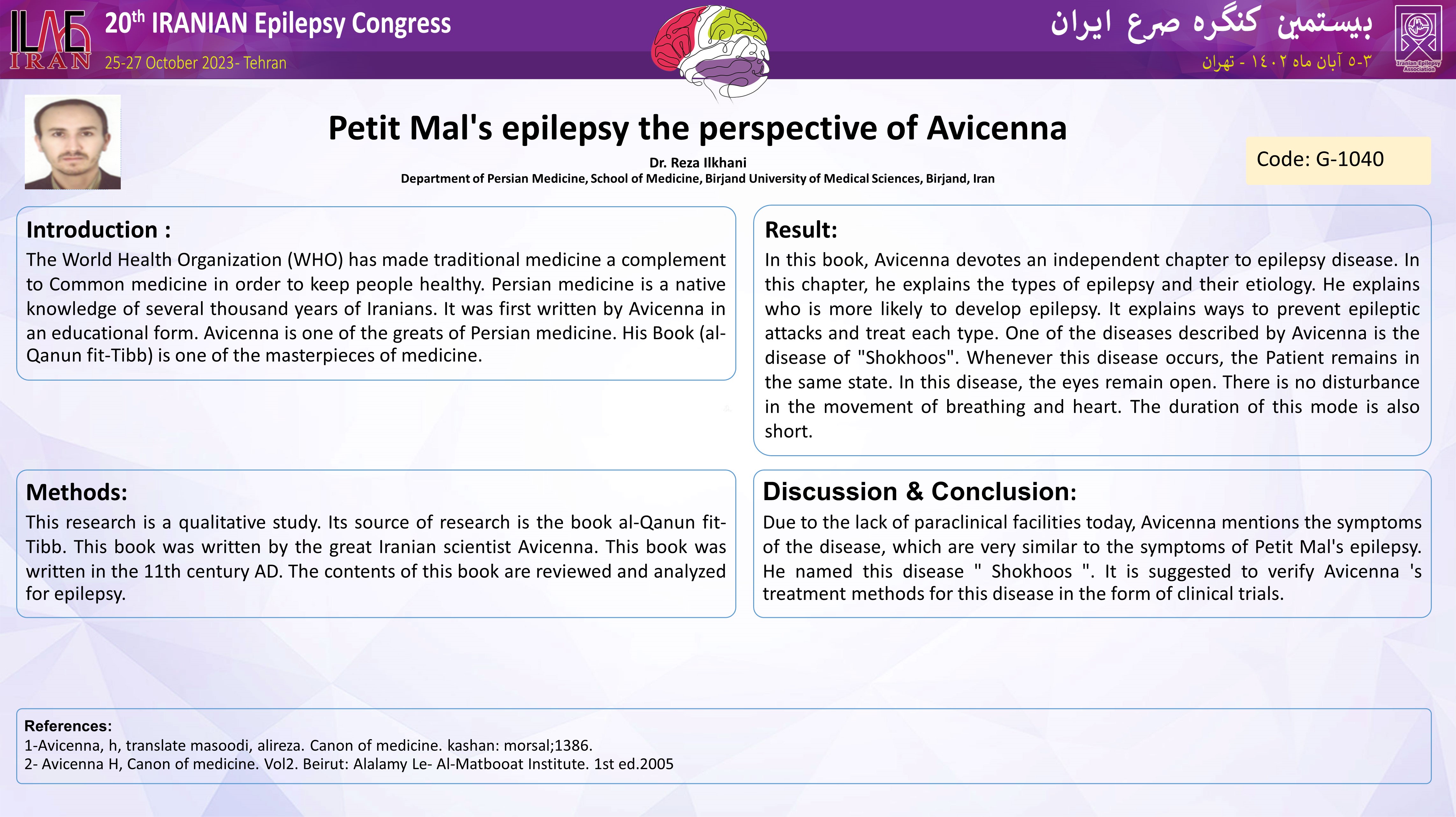Petit Mal's epilepsy the perspective of Avicenna
کد: G-1040
نویسندگان: Reza Ilkhani © ℗
زمان بندی: زمان بندی نشده!
دانلود: دانلود پوستر
خلاصه مقاله:
خلاصه مقاله
Background and Aim: The World Health Organization (WHO) has recognized traditional medicine as a valuable complement to modern healthcare. Persian medicine, a rich and ancient tradition with roots spanning thousands of years in Iran, holds a special place in this heritage. One of its luminaries, Avicenna, authored a seminal work on medicine known as "al-Qanun fit-Tibb" in the 11th century. This study qualitatively explores Avicenna's insights on epilepsy as documented in his influential book. Methods: This research relies on a qualitative approach, drawing its primary source from Avicenna's "al-Qanun fit-Tibb." This historic text serves as a comprehensive reference for the study of epilepsy, among other medical topics. Results: Avicenna dedicates a dedicated chapter within his book to epilepsy. Within this chapter, he delves into the various types of epilepsy and their potential causes. He provides insights into the individuals most susceptible to developing epilepsy and offers guidance on preventing epileptic seizures and treating each specific type. Notably, Avicenna describes a condition he terms "Shokhoos," characterized by a state where the patient remains unaltered with open eyes. Breathing and heart function continue normally, and the duration of this state is relatively short. Conclusion: In light of the contemporary limitations in paraclinical facilities, Avicenna's observations align closely with the symptoms of what is now known as Petit Mal epilepsy. He aptly termed this condition "Shokhoos." It is recommended that Avicenna's treatment methods for this condition be subjected to modern clinical trials to evaluate their efficacy and relevance. Keywords: Persian medicine; Avicenna; epilepsy; Petit Mal epilepsy
دیدگاه ها (0)
ارسال یک دیدگاه
ارسال دیدگاه توسط مدیریت بسته شده است.
